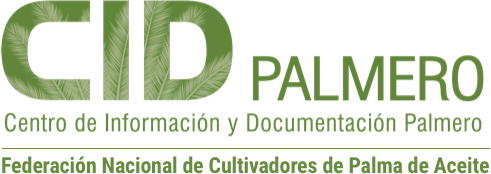Elevating the National oil palm productivity : Breeding and Agronomic R y D Aspects.

Author
Seminar on elevating National Oil Palm Productivity and Recent Progress in the Management of Peat and Ganoderma
May 5-6, 2002 :
Bangi, Selangor, Malaysia :
40260.
Goh, K.J.
41588.
Soh, Aik Chin
39790.
Estadisticas
Abstract
The current stagnating low average national . palm yield is not a reflection of the progress made in breeding and agronomy RD but of the failure in implementation of technologies developed. Current commercial planting materials already posess high yielding potential and prospect of its further improvement is rather limited at least for the near term. Yield improvement of 10-20 per cent can be expected in the near term with the advent of near true F1 hybrids, clonal hybrids and clones and this would come about from improved oil to bunch and adaptability to specific environmental for agronomic conditions. Cultivars with added value traits or from genetic engineering are unlikely to make any significant impact within this decade. At the current replanting rate of about 5 per cent the impact of the new higher yielding cultivars unlikely to be felt within the next 20 years. Elevating the national average yield in near term will have to be achieved through agronomic means with the existing planting materials. The agronomic knowledge and technology needed to achieve the site yield potential is already available for most situations and it remains for the estate management to work closely with the agronomist to work out the agromanagement strategies needed for successful inplementation in the present scenario of scarce and inefficient labour and large plantings /replantings. Nevetheless agronomy RD is still needed to further improve yield for the Industry to maintain its competitive edge. In our highly developed oil palm agriculture, further agronomic RD progress will most probably arise from "designer" combinations of agromanagement practices that improve the efficiency of inputs in specific production environments. This will involve both maximum yield research and yield variation research, which should be conducted simultaneously. The results from this work could also be developed into site-specific agriculture or precision and move the oil palm yields even closer towards the site yield potential if not exceeding it. Incluye 83 referencias bibliográficas. The current stagnating low average national . palm yield is not a reflection of the progress made in breeding and agronomy RD but of the failure in implementation of technologies developed. Current commercial planting materials already posess high yielding potential and prospect of its further improvement is rather limited at least for the near term. Yield improvement of 10-20 per cent can be expected in the near term with the advent of near true F1 hybrids, clonal hybrids and clones and this would come about from improved oil to bunch and adaptability to specific environmental for agronomic conditions. Cultivars with added value traits or from genetic engineering are unlikely to make any significant impact within this decade. At the current replanting rate of about 5 per cent the impact of the new higher yielding cultivars unlikely to be felt within the next 20 years. Elevating the national average yield in near term will have to be achieved through agronomic means with the existing planting materials. The agronomic knowledge and technology needed to achieve the site yield potential is already available for most situations and it remains for the estate management to work closely with the agronomist to work out the agromanagement strategies needed for successful inplementation in the present scenario of scarce and inefficient labour and large plantings /replantings. Nevetheless agronomy RD is still needed to further improve yield for the Industry to maintain its competitive edge. In our highly developed oil palm agriculture, further agronomic RD progress will most probably arise from "designer" combinations of agromanagement practices that improve the efficiency of inputs in specific production environments. This will involve both maximum yield research and yield variation research, which should be conducted simultaneously. The results from this work could also be developed into site-specific agriculture or precision and move the oil palm yields even closer towards the site yield potential if not exceeding it.
The current stagnating low average national . palm yield is not a reflection of the progress made in breeding and agronomy RD but of the failure in implementation of technologies developed. Current commercial planting materials already posess high yielding potential and prospect of its further improvement is rather limited at least for the near term. Yield improvement of 10-20 per cent can be expected in the near term with the advent of near true F1 hybrids, clonal hybrids and clones and this would come about from improved oil to bunch and adaptability to specific environmental for agronomic conditions. Cultivars with added value traits or from genetic engineering are unlikely to make any significant impact within this decade. At the current replanting rate of about 5 per cent the impact of the new higher yielding cultivars unlikely to be felt within the next 20 years. Elevating the national average yield in near term will have to be achieved through agronomic means with the existing planting materials. The agronomic knowledge and technology needed to achieve the site yield potential is already available for most situations and it remains for the estate management to work closely with the agronomist to work out the agromanagement strategies needed for successful inplementation in the present scenario of scarce and inefficient labour and large plantings /replantings. Nevetheless agronomy RD is still needed to further improve yield for the Industry to maintain its competitive edge. In our highly developed oil palm agriculture, further agronomic RD progress will most probably arise from "designer" combinations of agromanagement practices that improve the efficiency of inputs in specific production environments. This will involve both maximum yield research and yield variation research, which should be conducted simultaneously. The results from this work could also be developed into site-specific agriculture or precision and move the oil palm yields even closer towards the site yield potential if not exceeding it.
Palabras clave:
Clones.
Híbrido
Investigación.
Material de siembra
Mejoramiento genético
Política de desarrollo.
Prácticas de cultivo
Rendimiento.
Transferencia de tecnología.
Renovación de cultivos
Palma de aceite
Clones.
Híbrido
Investigación.
Material de siembra
Mejoramiento genético
Política de desarrollo.
Prácticas de cultivo
Rendimiento.
Transferencia de tecnología.
Renovación de cultivos
Palma de aceite


